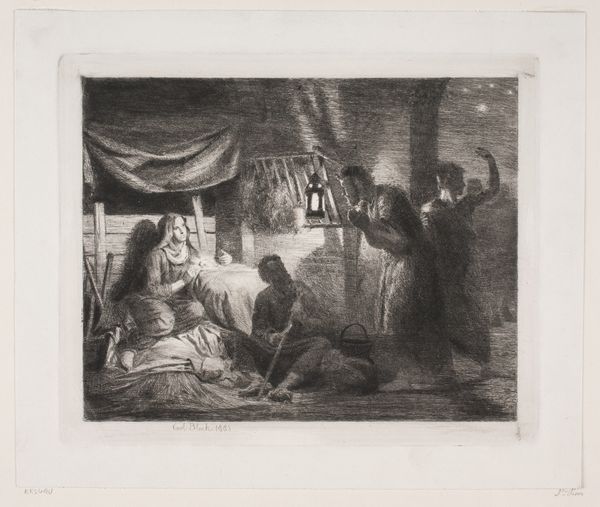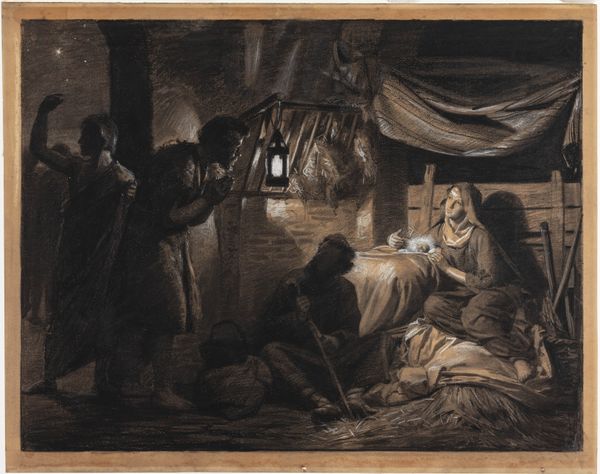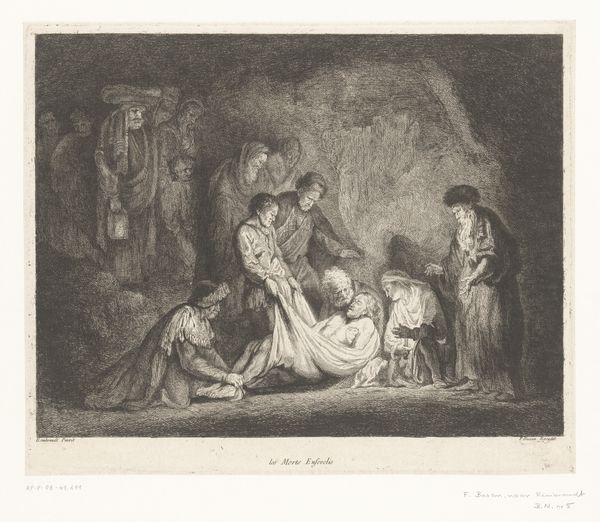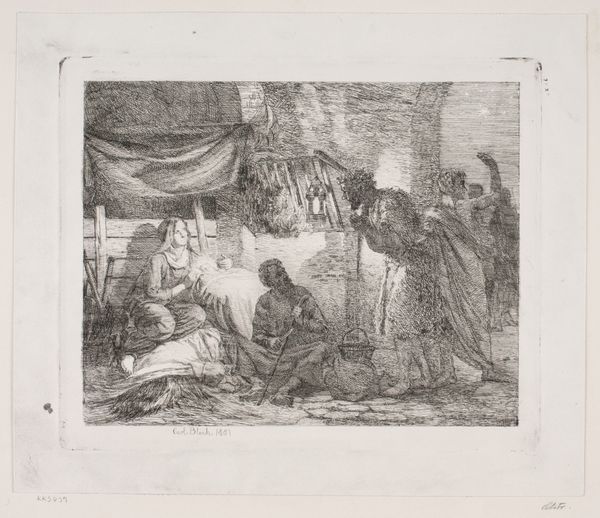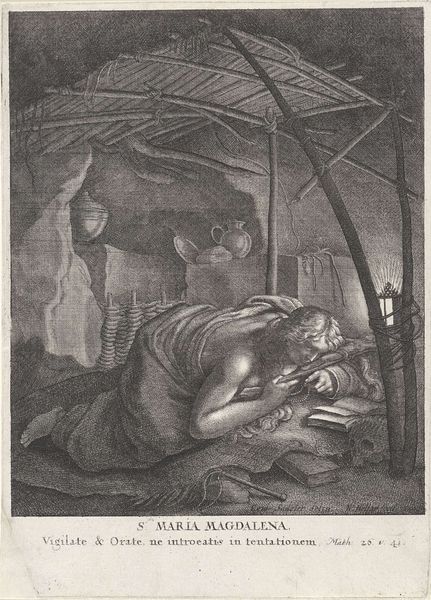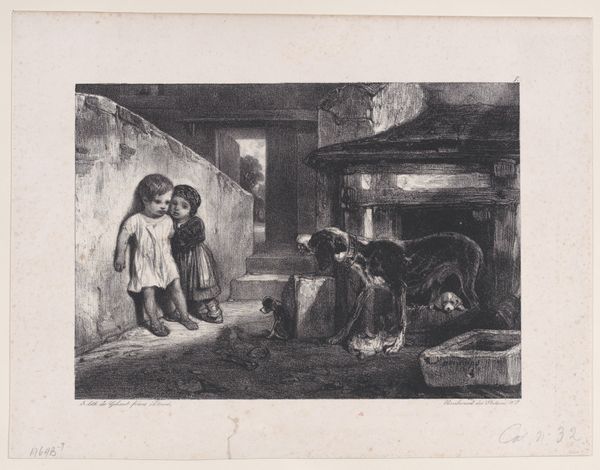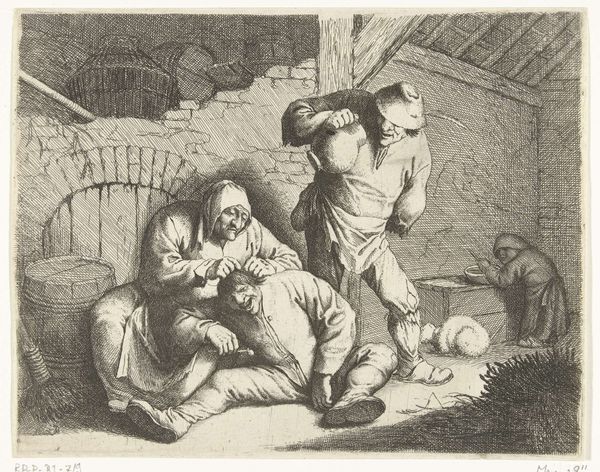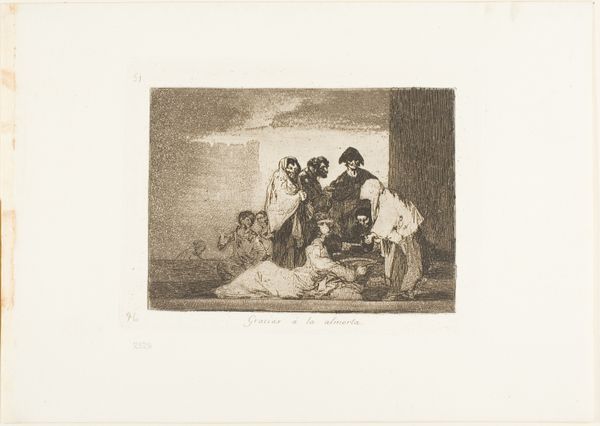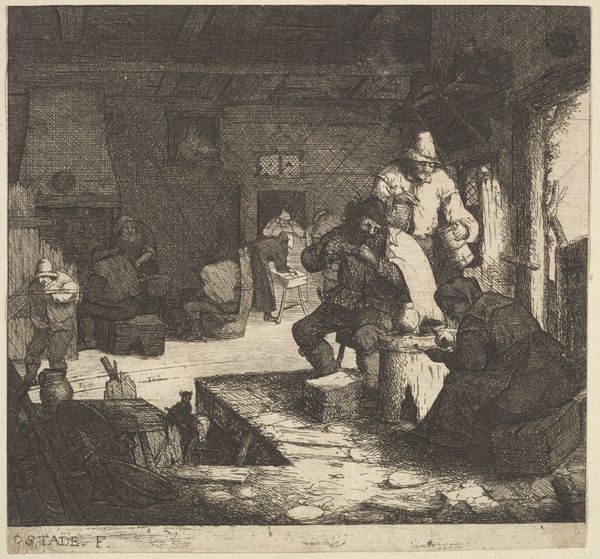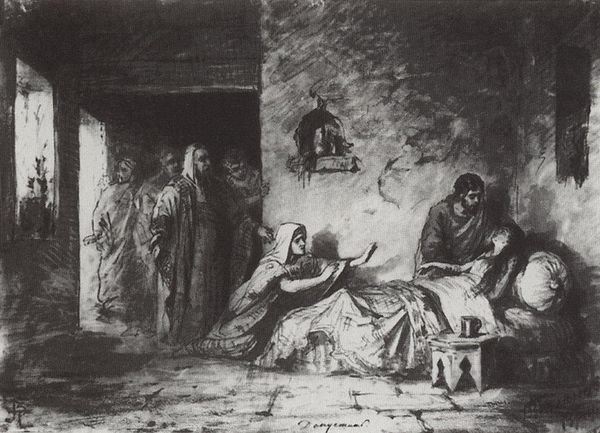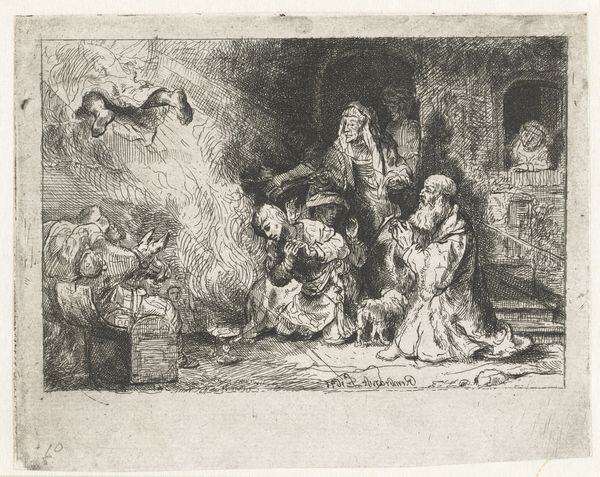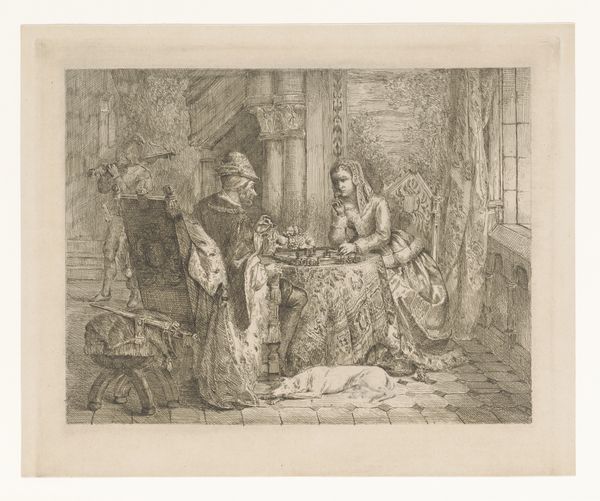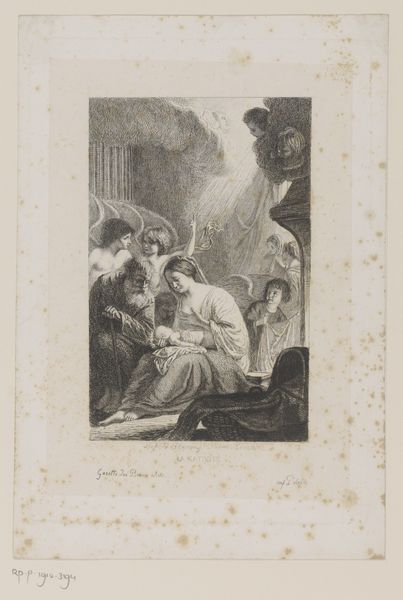
Dimensions: 315 mm (height) x 450 mm (width) (bladmaal), 181 mm (height) x 223 mm (width) (plademaal)
Editor: So, this is Carl Bloch's 1881 etching, "The Adoration of the Shepherds." It's a small print, but the composition feels monumental. I'm struck by the contrast between the figures bathed in light and the deep shadows around them. What do you see in this piece? Curator: Beyond the formal elements, I see a powerful representation of faith encountering poverty. Bloch, working in 19th-century Denmark, was deeply concerned with social issues, and this piece can be read as a commentary on the marginalized. Consider the shepherds: they're not kings or priests, but the working class, the outsiders. Editor: That's a great point! The religious narrative usually focuses on the spectacle of the divine, but here the focus is shifted to these working-class figures. Curator: Exactly! And it challenges the power structures of the time. Look at the way Mary is depicted: maternal and grounded, but also strong. How does her portrayal depart from typical representations of women in art? Editor: She’s not idealized in the same way. Her gaze seems directed outward. Maybe acknowledging the world outside? Curator: Perhaps. What I find compelling is how Bloch uses a well-known biblical scene to examine social inequalities. He compels us to think about who is deemed worthy of witnessing the sacred. It makes you consider how art can challenge prevailing cultural narratives. Editor: I'd never considered that narrative aspect before. Seeing it as a subtle form of protest. That changes how I interpret the piece. Thanks. Curator: My pleasure. Thinking about art through a lens of social justice brings such new meaning.
Comments
No comments
Be the first to comment and join the conversation on the ultimate creative platform.
